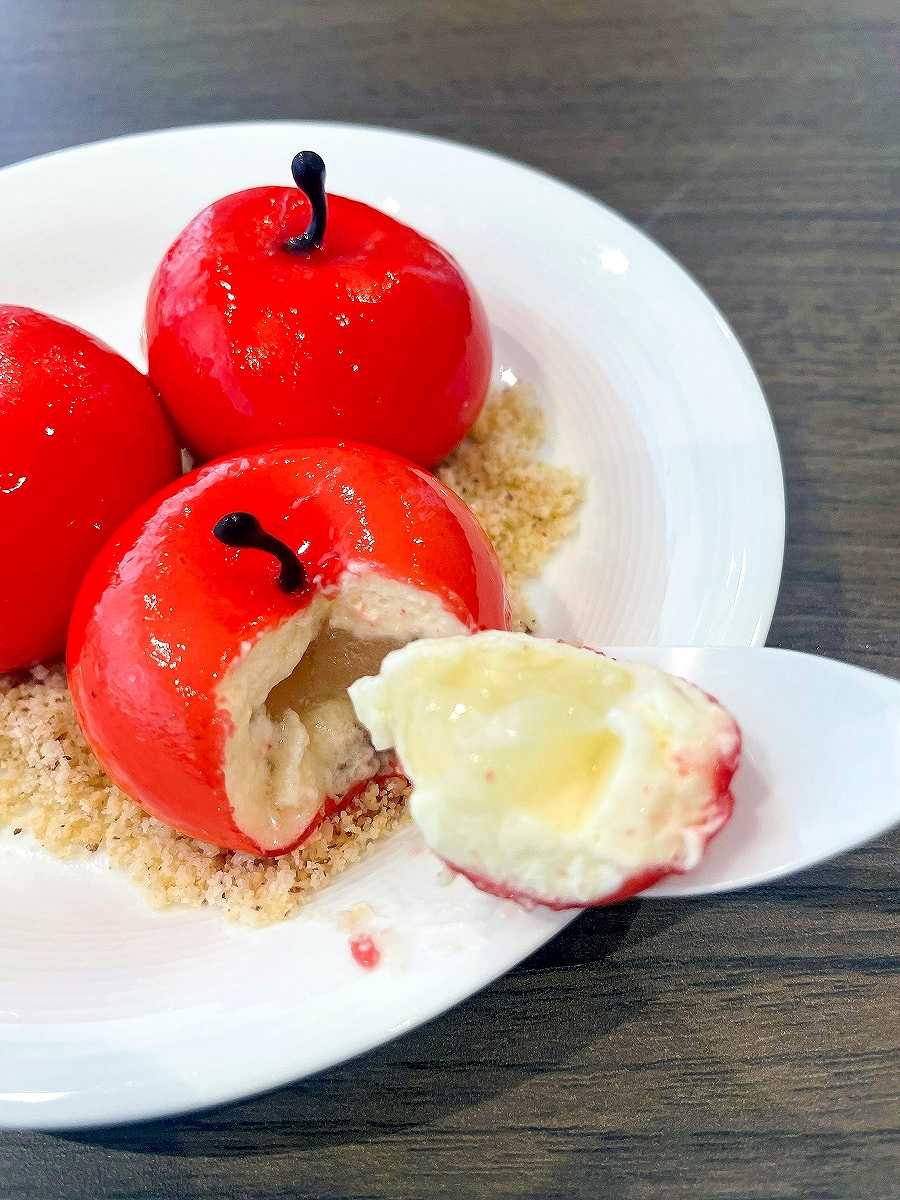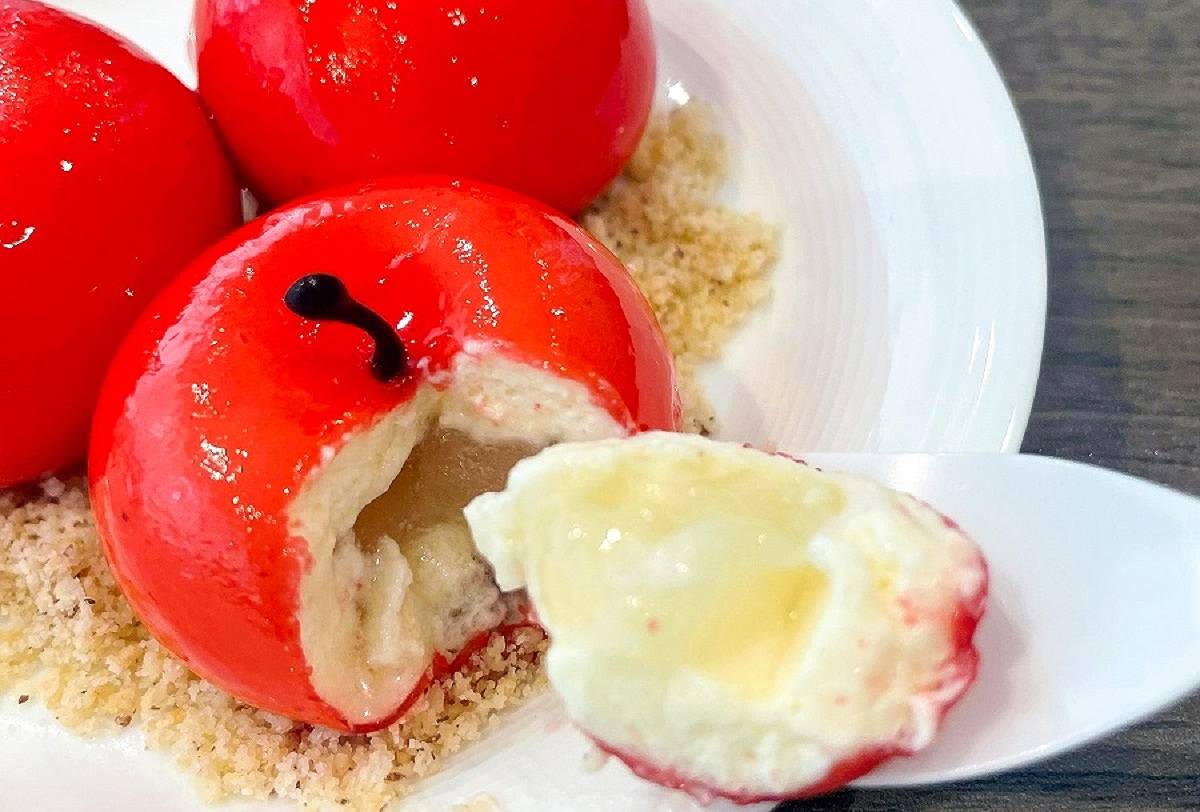
An “inclusive food” apple dessert developed by Kayo Shimizu that looks like a real apple.
12:00 JST, August 11, 2024
Dishes designed to enable people with chewing and swallowing difficulties to enjoy tasty food are becoming increasingly popular.
The “inclusive diet” dishes are aimed at everyone who wants to enjoy tasty food even if they have no problems with eating.
Some dishes are designed to look and taste like regular food. A dish that at first glance looks like a whole apple is actually an apple jelly covered in a cheese mousse and topped with a berry sauce. The dessert is so soft that you can swallow it without biting.
Pastry chef Kayo Shimizu, 45, created the dish last fall after speaking to parents of children who have difficulty chewing and swallowing. She decided to develop a dessert that would have a pleasant texture when eaten. Shimizu has previously developed inclusive food as part of a project in collaboration with the Tokyo Metropolitan Government.
Shimizu plans to open a cafe in the future and offer the dessert as a menu item. “I want to create food that smells good, feels good and looks good for people who have difficulty eating,” she said.
Inclusive eating is based on the idea that the shared enjoyment of eating is an important experience regardless of disability. Safe eating is usually considered essential for people with disabilities, but the shared enjoyment of eating is considered equally important. Therefore, inclusive eating is prepared in such a way that everyone can start eating at the same time. Additional preparation, such as chopping the food with a blender, is not required.
Sakura Kato, 43, a representative of mogmog engine, a registered association of parents whose children need help eating, is grateful for the move. Her second daughter, Mako, 14, suffers from muscular dystrophy, a persistent disease that causes muscle weakness throughout the body.
Kato says her daughter enjoys eating. “Even though she can’t communicate well with words, I can tell when she likes the food because she eats faster than usual,” Kato said.
Meals prepared for people with chewing and swallowing difficulties do not always taste good to those affected and are often unknown to people without eating problems.
“I hope that everyone in the same room can start eating the same dish after saying ‘Itadakimasu’ (an expression used to thank for the food) together,” Kato said.
Cooperative restaurants
Some restaurants have started offering dishes on their menu that are edible for everyone, including people who have difficulty chewing and swallowing.
ChocolaBit Lab., a chocolate shop in Tokyo’s Shinjuku district, offers thick drinks that are easier to swallow. Saori Okamoto, 40, a doctor who runs the shop, said, “Chocolate melts naturally in the mouth and has a pleasant aroma and taste, so it can be eaten by children, the elderly and people with oral dysfunction and other problems.”
The Lumine Tachikawa branch of Soup Stock Tokyo in Tachikawa, Tokyo, has eight soups on its menu that are specifically designed for people with chewing difficulties. The soups are explained in a chart that shows the consistency of the ingredients. A masher and other tools are available for customers to make adjustments before consumption.
Haruka Tohara, a professor at Tokyo University of Medicine and Dentistry, has published information online about restaurants that offer dishes that take into account people who have problems with normal nutrition.
“With a wider range of dishes, people with swallowing and chewing problems will enjoy eating more, and these people and their families will be motivated to live more positive lives,” Tohara said. “If more restaurants are cooperative and, for example, provide cutlery so they can eat their meals more easily, it will make it easier for these people to go out despite their disability, and it will contribute to a more inclusive society.”



